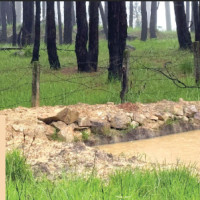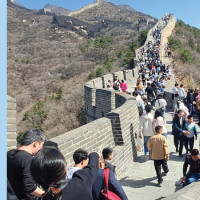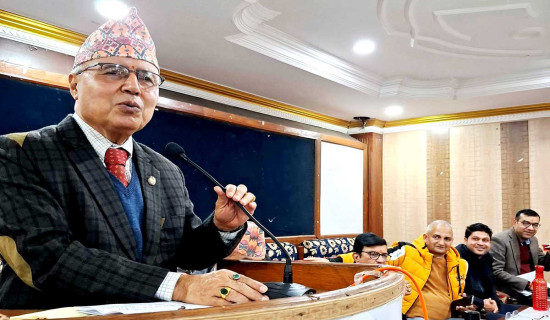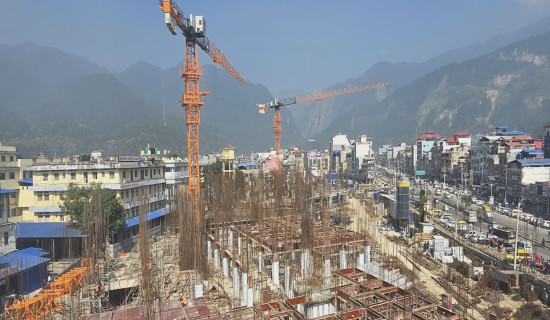- Monday, 8 December 2025
Gadhimai Festival: A Celebration Of Devotion
The Gadhimai festival, celebrated every five years in Bariyarpur, Bara, Nepal, is one of the most culturally significant yet controversial events globally. Dedicated to Goddess Gadhimai, the festival is infamous for the mass sacrifice of 500,000 animals, including buffaloes, goats, chickens, and pigeons from five million devotees. Devotees offer these sacrifices to seek blessings, prosperity, and the removal of obstacles. The festival attracts millions of attendees from Nepal, India, and other countries, making it a major religious, cultural, and tourism event. Despite its deeply rooted traditions, the festival faces criticism from animal rights activists worldwide. However, it continues to thrive as an essential cultural heritage, deeply tied to Nepal’s economy and identity. It is celebrating in 2024 from December 2 to 11, lasting nine days—dedicated to Goddess Nawadurga.
Religious significance
The Gadhimai festival is a nine-day Hindu celebration dedicated to Gadhimai, the goddess of power (shakti). The festival is significant for its large-scale rituals and offerings. The nine days symbolise the nine forms of Goddess Durga, making the festival a comprehensive celebration of divine power. Sacrifice (bali) is a central ritual, rooted in ancient Hindu traditions. Devotees believe that offering life to the goddess strengthens their bond with the divine, purges negative energies, and ensures cosmic balance. Sacrifice in this context is a symbolic gesture reflecting the cycle of life and death. It is believed that the life energy transferred through sacrifice brings blessings, prosperity, and the removal of obstacles. For devotees, this practice is akin to offering flowers or lighting diyas to deities, a gesture of devotion and reverence.
The festival is deeply rooted in the esoteric practices of Tantrism, a philosophical tradition emphasising rituals, energy harnessing, and cosmic alignment. Goddess Gadhimai is revered as a tantric deity, embodying creation and destruction. Tantric rituals, including the sacrifice of animals, are believed to transfer life force to the goddess, amplifying the devotee’s connection with her.
Blood, considered the ultimate carrier of life energy, plays a crucial role in these rituals. Its offering is thought to energise the ritual space, balance spiritual debts, and remove karmic burdens. In tantric philosophy, sacrifice represents destruction, paving the way for renewal and creation. Through this act, devotees aim to eliminate negativity and invite divine blessings into their lives.
Tourism significance
The festival is not only a religious and cultural occasion but also a major tourism attraction. It draws over five million visitors from Nepal, India, and abroad, including devotees, tourists, and researchers. This influx of people generates significant economic activity in the region, benefiting local businesses, vendors, and the hospitality industry. The festival provides international tourists with a unique opportunity to witness an ancient tradition that has remained largely unchanged for centuries. For cultural and religious tourists, the festival offers insight into Nepal’s rich heritage, particularly its Tantric and Shaktism practices. The dramatic rituals and the vibrant atmosphere make it a captivating experience for photographers, documentary filmmakers, and anthropologists. Additionally, the festival indirectly promotes other tourism sectors, as visitors often explore nearby attractions, such as the Parsa National Park or cultural sites in the Terai region. This creates a ripple effect, boosting Nepal’s overall tourism economy.
The Gadhimai festival is a vital economic event for the region. Temporary markets, food stalls, and fairs spring up around the temple, creating jobs and opportunities for locals. Traders sell everything from religious items to local crafts, catering to the millions of visitors. The influx of tourists boosts demand for accommodations, transportation, and other services, contributing significantly to the local economy. For many attendees, the festival is also a pilgrimage, drawing devotees who invest in travel, lodging, and offerings. The event serves as an economic lifeline for Bariyarpur and surrounding areas, fostering community development and regional growth.
The large-scale slaughter of animals during the Gadhimai festival has drawn widespread criticism from animal rights activists. The criticism often stems from a lack of understanding of the cultural and philosophical foundations of the ritual. They point out the hypocrisy of condemning traditional sacrifices while ignoring the industrial-scale slaughter of animals in poultry, goat, fish, and buffalo farms worldwide.
From a psychological standpoint, the festival provides devotees with a sense of catharsis and emotional release. The collective act of sacrifice fosters a sense of belonging and shared cultural identity. For rural communities, the event strengthens social bonds, offering a rare opportunity to gather and celebrate together. It reinforces hope, empowerment, and connection with the divine. The rituals serve as a way to confront primal fears and desires, aligning with tantric practices that emphasise overcoming internal obstacles for spiritual growth.
Many devotees view the ritual of sacrifice as an integral part of their cultural and religious identity. Attempts to replace it with symbolic alternatives are often seen as an erosion of tradition. Critics argue that such changes threaten Nepal’s unique cultural heritage, much like efforts to preserve Buddhism, Shaivism, or Shaktism have been instrumental in protecting global religious diversity. Respecting cultural significance is essential for fostering harmony and diversity in an increasingly globalised world.
Conclusion
The Gadhimai festival symbolises Nepal’s rich religious and tantric heritage while serving as a significant economic and tourism affair. The festival’s rituals, though contentious, hold profound philosophical and spiritual meaning for millions of devotees. A deeper understanding of cultural and tantric values of the festival is necessary for modern international animal rights activists in this postmodern era. The ritual is no more unethical than the industrial-scale slaughter of animals in modern farms. As a major tourism event, the festival provides a unique platform to showcase Nepal’s cultural richness to the world. It challenges modern society to balance cultural preservation with ethical evolution, fostering mutual respect and understanding across diverse traditions. The festival is a testament to the enduring power of faith, culture, and community in shaping human identity.
(Badal is associated with tourism research and development.)

















